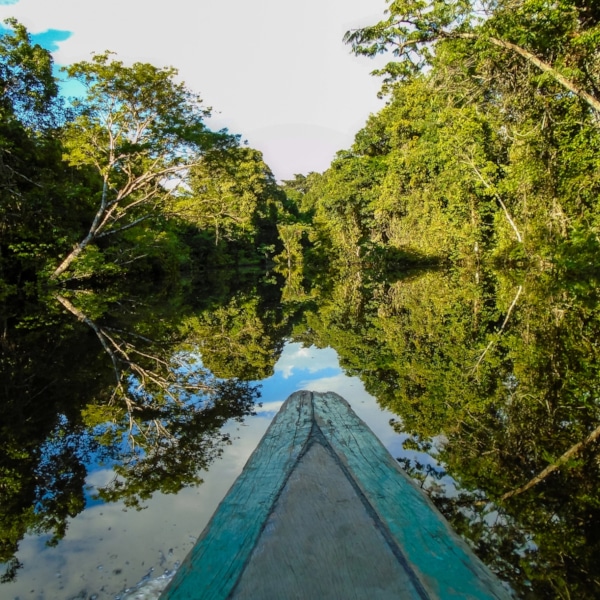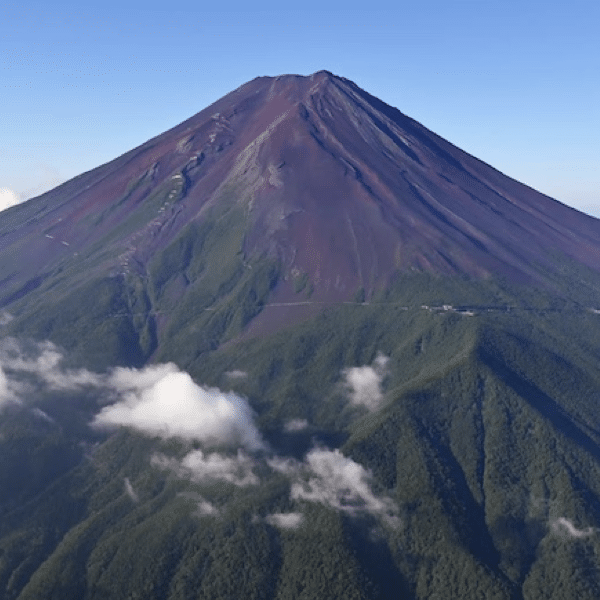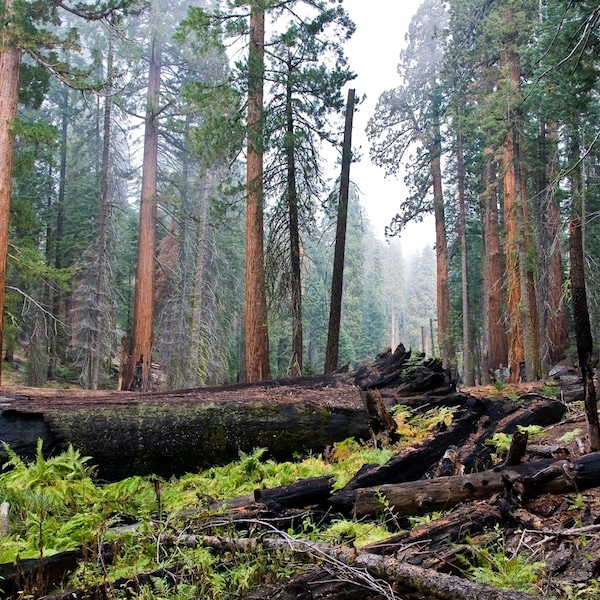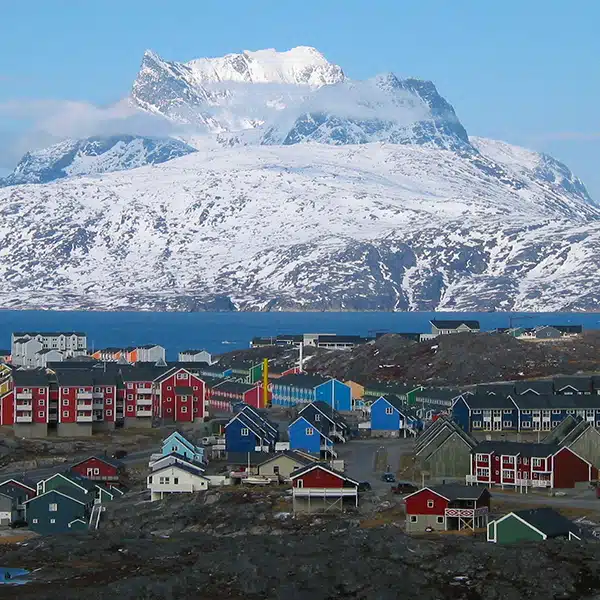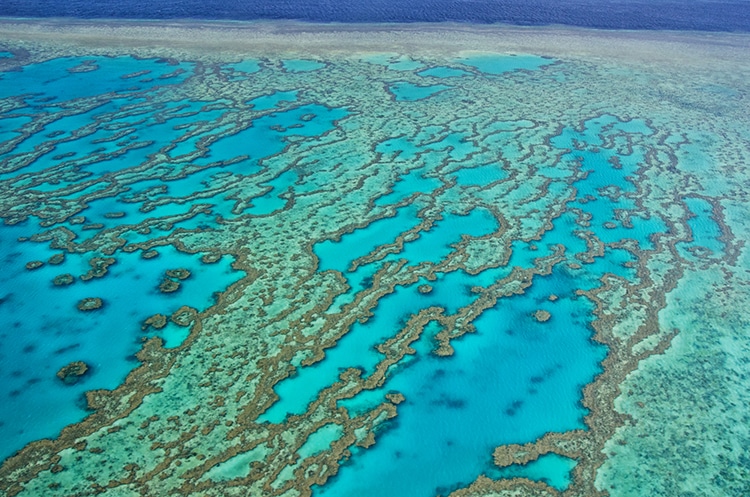
The Great Barrier Reef as seen from above. (Photo: ANTSYD/Depositphotos)
The Great Barrier Reef is a global treasure. Visible from space, the marine park stretches over 1,800 miles along Australia's Queensland coast. The bright coral is a phenomenal living being visible under crystal-clear waters. A favorite of divers, it is home to 400 different kinds of coral, rays, dolphins, 1,500 species of fish, 200 types of birds, sea turtles, mating humpback whales, and even giant clams. This year, parts of the Great Barrier Reef recorded the highest coral cover in 36 years, a sign of resilience in the face of ongoing threats.
Bleaching due to underwater waves (brought on by the climate crisis) is an ongoing danger to the reef. The years 2016 and 2017 were bad for the coral, and 2022 is also experiencing a wave of bleaching. However, in the central and northern parts of the reef, the coral has shown signs of recovery; hard coral cover reached 33% and 36% this year, respectively. Meanwhile, it declined from 38% to 34% in the southern portion.
Australian Institute of Marine Science CEO Dr. Paul Hardisty noted in a statement, “A third of the gain in coral cover we recorded in the south in 2020/21 was lost last year due to ongoing crown-of-thorns starfish outbreaks…This shows how vulnerable the Reef is to the continued acute and severe disturbances that are occurring more often, and are longer-lasting.”
“In our 36 years of monitoring the condition of the Great Barrier Reef we have not seen bleaching events so close together,” Hardisty noted. While bleaching is an accelerating risk, there is reason for hope. “These latest results demonstrate the Reef can still recover in periods free of intense disturbances.”
Reefs are critical to healthy ocean ecosystems, so resilience is good news as climate change continues to impact our world's waters.
This year, parts of the Great Barrier Reef recorded the highest coral cover in 36 years—a sign of resilience in the face of ongoing threats.
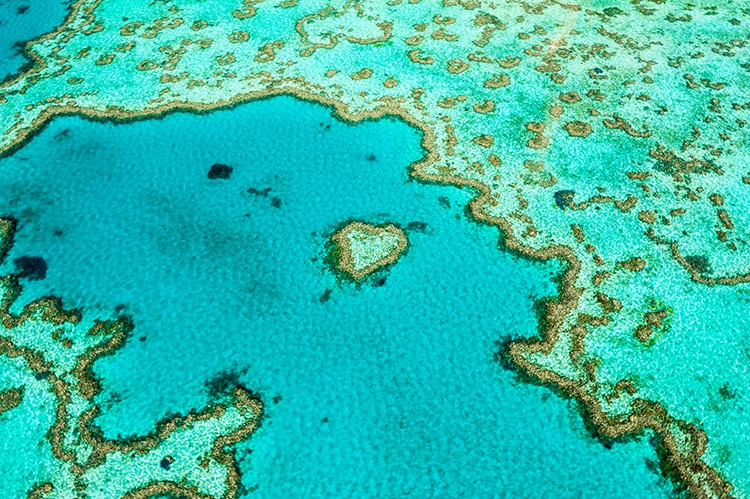
Photo: AATKINSONPHOTOGRAPHY/Depositphotos
The northern and central portions of the reef showed more coral cover while the southern saw reduced results.
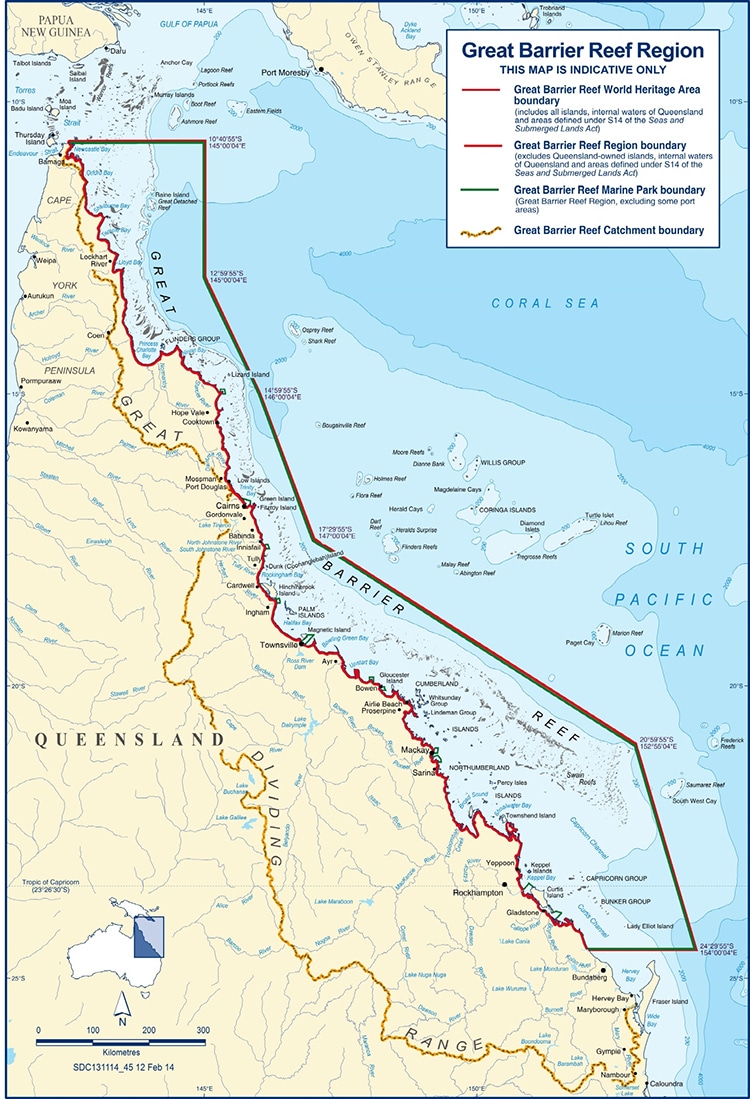
A map of the Great Barrier Reef. (Photo: Commonwealth of Australia (Great Barrier Reef Marine Park Authority) 2014 via Wikimedia Commons, CC BY 3.0)
h/t: [CNBC]
Related Articles:
Mysterious Red Clouds Over the Atlantic Ocean Has Completely Mystified the Internet
Study Finds World Can Switch to 100% Renewable Energy and Earn Back Its Investment in Just 6 Years
U.S. Will Plant More Than 1 Billion Trees To Counter Wildfire Destruction











































































